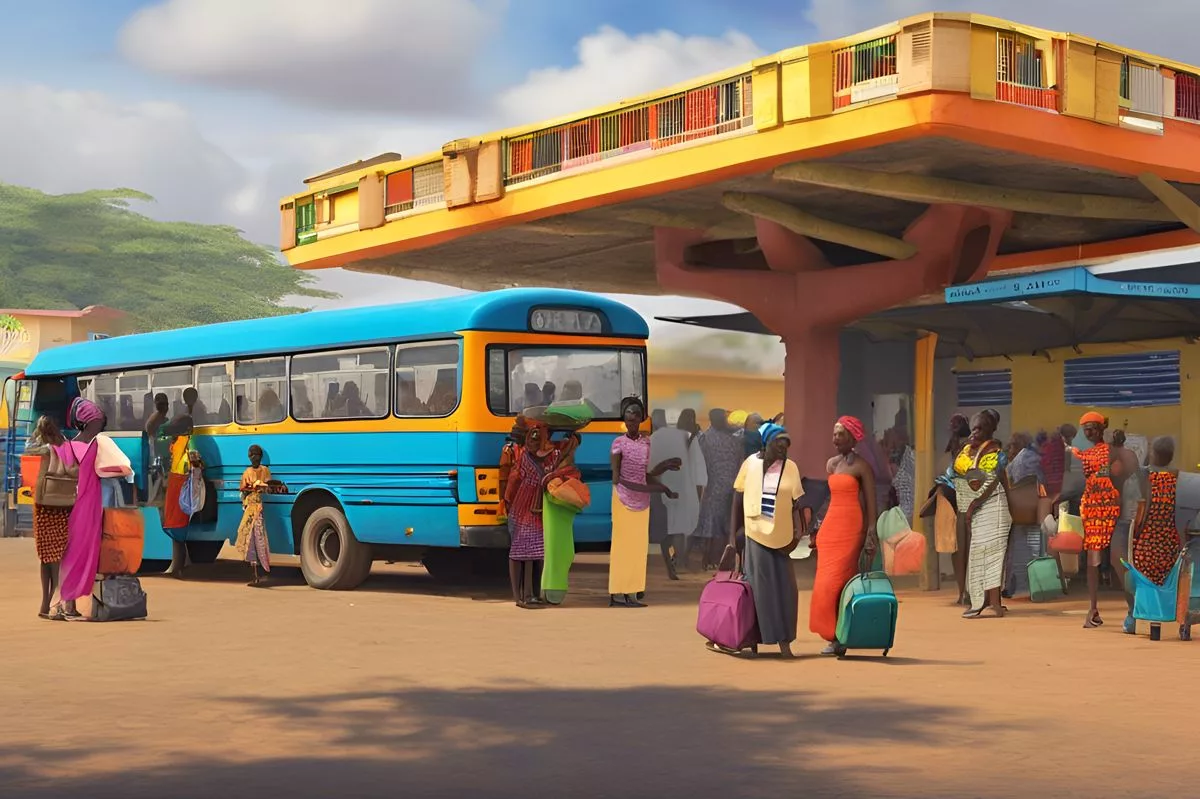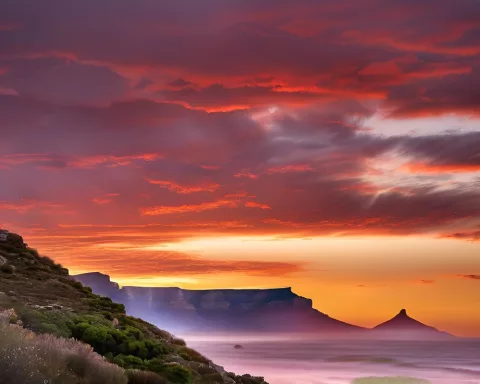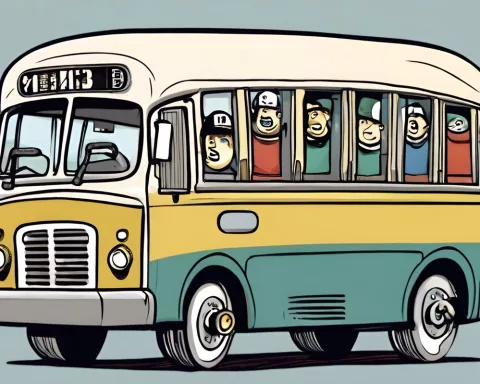Traversing Africa via public transport is a thrilling adventure that requires patience and flexibility. It’s an immersive way to understand the continent’s people, cultures, and landscapes while experiencing its unpredictable nature. Though there may be challenges, the journey offers unforgettable memories and a newfound appreciation for the unexpected. It’s an exploration of new territories and of oneself, ultimately leaving travelers with a passion for the path less trodden.
Traversing Africa via public transport is an authentic and immersive way to explore the continent’s vast and diverse land. While the journey may be unpredictable, it is an adventure that requires patience, flexibility, and resilience. Maneuvering through the maze of public transport offers an intimate understanding of Africa’s inhabitants, cultures, and landscapes and is a tribute to the continent’s toughness, variety, and allure. It is a voyage of exploration that leaves travelers with indelible memories and a newfound appreciation for the unexpected.
Launching the Expedition
Africa, the birthplace of civilization, is a treasure trove of some of the most complex and enthralling public transport networks on the globe. While not always punctual, these systems serve as an authentic and immersive way to traverse the continent, forming a bridge between the known and the unknown. Therefore, maneuvering through Africa’s public transport maze is more than just a means to a destination – it is an experience in itself. A voyage across this vast, diverse land is an exhilarating adventure, a testament to patience, and a chance to delve into cultures, terrains, and lifestyles far from the beaten track.
Back in 2015, my friend and I, at the time just penniless students, embarked on a remarkable odyssey, a trip from Cape Town to Zanzibar primarily via public transport. This adventure, executed on a tight budget, took us through Mozambique, Zimbabwe, Zambia, and Tanzania, providing an intimate and personal insight into these varied countries. Our journey began at the Bellville railway station in Cape Town, where we hopped on the Shosholoza Meyl, ready to plunge into the anticipation and thrill of African public transport.
Our expedition was studded with unforgettable instances that spanned from the comforting luxury of bunk beds and hot water on the train to Pretoria, to the anticipation and adventure of sleeping on a station floor at Komatiepoort, eagerly awaiting the first taxis to whisk us to the border. We savored the leisurely ferry ride from Maputo to Inhaca Island, where we soaked in the island life, reveling in the simplicity of grilling fresh fish over a fire and sleeping in a tent at a backpackers’ hostel.
Encountering the Unforeseen
A vital aspect of traversing Africa via public transport is the need to acclimate and adjust to shifting circumstances. This adaptability was put to the test when we reached the dusty town of Chicualacaula in Mozambique after a grueling 20-hour train ride. The lack of a formal immigration office, the scanty infrastructure, and the long wait under an acacia tree for the next train in Sango, Zimbabwe, were experiences that felt challenging at the moment, but in hindsight, contributed to the richness of our adventure.
In Zimbabwe, we were awed by the punctual train service and the dated yet operational carriages, remnants from the 1930s. The train ride from Bulawayo to Victoria Falls gave us an up-close view of the African bushveld, hidden villages, and if luck favored, a sporadic glimpse of wildlife. The visuals, noises, and unique incidents offered by these train rides engraved unforgettable memories in our minds.
Embracing the Challenges
The expedition was not devoid of its bumps – the unpredictability of public transport, the logistical obstacles of currency and ticketing, and the occasional discomfort of strenuous journeys. However, these very hurdles made our voyage more memorable. We relished the unexpected – the flavor of a simple meal of pap, goat, and spinach cooked over a fire, the camaraderie among fellow travelers, and the breathtaking landscapes that unfolded before our eyes.
At Victoria Falls, we bathed in the mist from the waterfall, a rejuvenating and much-needed break from our strenuous journey. From there, we advanced towards Zambia, crossing yet another border in our grand African escapade.
Reaping the Rewards
Maneuvering through Africa’s public transport, indeed, calls for patience, flexibility, and resilience. It’s about relinquishing control and welcoming the unknown. However, the benefits are immense – an intimate understanding of the continent, its inhabitants, cultures, and landscapes. This expedition across Africa, enabled by its public transport, was a tribute to the continent’s toughness, variety, and allure. It was a voyage of exploration – of new terrains, fresh cultures, and perhaps most crucially, of ourselves. We ended the journey, not merely with indelible memories, but also with an appreciation for the unexpected and a newfound passion for the path less trodden.
1. What is traversing Africa via public transport like?
Traversing Africa via public transport is an authentic and immersive way to explore the continent’s vast and diverse land. It requires patience, flexibility, and resilience, but offers a chance to delve into cultures, terrains, and lifestyles far from the beaten track.
2. What are some challenges one may face while traversing Africa via public transport?
One may face challenges such as the unpredictability of public transport, the logistical obstacles of currency and ticketing, and the occasional discomfort of strenuous journeys.
3. What are some benefits of traversing Africa via public transport?
The benefits of traversing Africa via public transport include an intimate understanding of the continent, its inhabitants, cultures, and landscapes. It is a tribute to the continent’s toughness, variety, and allure, and a voyage of exploration – of new terrains, fresh cultures, and perhaps most crucially, of oneself.
4. What was the experience of the author and their friend while traversing Africa via public transport?
The author and their friend embarked on a remarkable odyssey, a trip from Cape Town to Zanzibar primarily via public transport. Their expedition was studded with unforgettable instances that spanned from the comforting luxury of bunk beds and hot water on the train to Pretoria, to the anticipation and adventure of sleeping on a station floor at Komatiepoort, eagerly awaiting the first taxis to whisk them to the border.
5. What are some unforgettable instances the author and their friend experienced while traversing Africa via public transport?
The author and their friend had unforgettable instances such as the leisurely ferry ride from Maputo to Inhaca Island, where they soaked in the island life, reveling in the simplicity of grilling fresh fish over a fire and sleeping in a tent at a backpackers’ hostel.
6. How does traversing Africa via public transport contribute to one’s perspective?
Traversing Africa via public transport offers an intimate understanding of Africa’s inhabitants, cultures, and landscapes and is a tribute to the continent’s toughness, variety, and allure. It ultimately leaves travelers with a passion for the path less trodden and a newfound appreciation for the unexpected.












